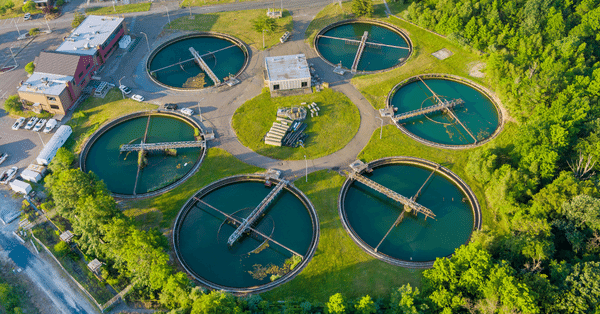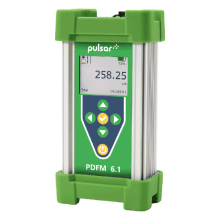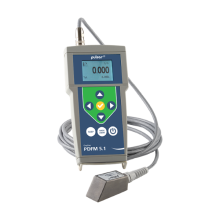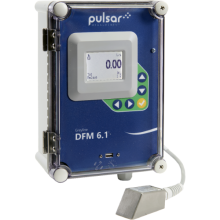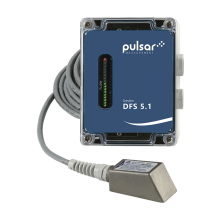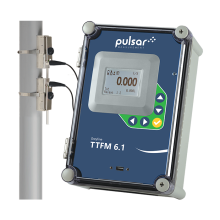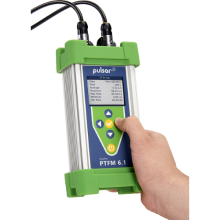Clamp-On Ultrasonic Flowmeters for Dirty Water and Contaminated Liquids
Pulsar Measurement's Ultrasonic Doppler Flowmeters are a perfect quick and non-invasive solution for measuring the flow of dirty water and other contaminated liquids transported via pipeline.
The Doppler flowmeter range includes portable and fixed devices, which can be quickly deployed in the field, allowing site engineers and technicians to begin collecting flow measurements quickly and reliably.
What is A Clamp-On Ultrasonic Doppler Flow metering?
Clamp-On portable and fixed ultrasonic Doppler flow meters are simple and easy to deploy as a non-invasive, non-contact flow meter solution for projects that involve the measurement of dirty, or debris-laden liquid.
This technology discharges ultrasonic pulses into a section of the piping system, where the signal is refracted off the flowing media within the liquid and then received back into a transducer.
This outgoing signal is measured against the received frequency-shifted signal, providing the site engineer with an accurate measurement of the system's flow.
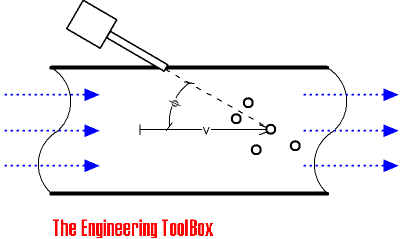
In-line vs CLamp-On flowmeter, what is the difference?
A typical in-line flowmeter solution, such as an electromagnetic or turbine flow meter, requires a halt in production to install the flowmeter.
The benefit of a Pulsar Ultrasonic Doppler Flow meter is that it can be deployed quickly, by simply clamping it onto the exterior of the pipe and programming it to account for pipe thickness and diameter.
Your operation is ready to begin measuring flow quickly and efficiently and more importantly, with no requirement to bring the process to a halt.
What applications can I use a Doppler Flow Meter on?
You can use a Doppler clamp-on flowmeter on the following:
- Sewerage piping.
- Abrasive fluids with sand, such as a dredging operation.
- Slurries, wet cement or mining tailings.
- Construction site de-watering
- Corrosive media, such as acids and alkalines.
How does an Ultrasonic Doppler Flow Meter differ from Transit-Time flow metering?
A transit-time flowmeter is used to measure the flow of clean liquids, whereas Ultrasonic Doppler flowmeters rely upon material suspended in the flowing liquid to function and provide a reading.
Transit-time flow metering functionally operates with a transmitter unit and receiver unit clamped oppositely to each other on a pipe, measuring the time taken between the pulse being transmited and received.
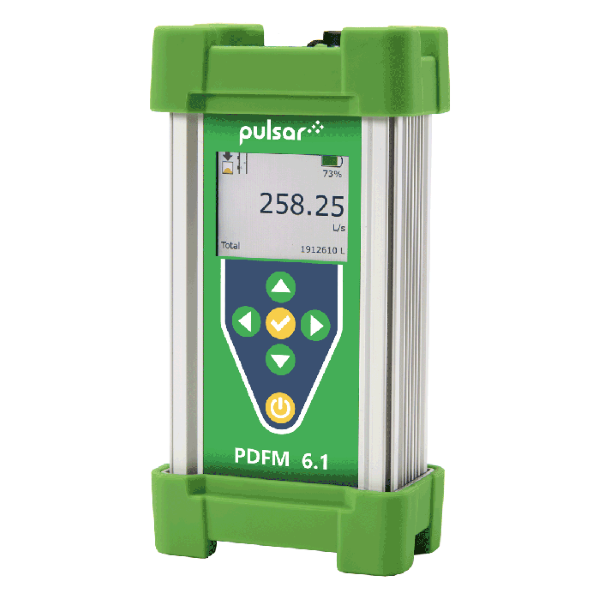
Can an Ultrasonic Doppler Flowmeter be used for measuring clean water?
No, Ultrasonic Doppler flowmeters require liquid rich with particulates and/or bubbles. The Doppler sensor interacts with the bubbles or particulates to measure the flow accurately.
If you are measuring the flow of clean water, please see our Pulsar Measurement transit-time flow meters, PTFM 6.1 or TTFM 6.1
If it is unclear whether a Doppler flow meter is suitable for your application, ADM has portable flow meters with a range of sensors for all pipe sizes, available for hire.
Can Ultrasonic Flowmeters be used on large pipes?
Yes, Ultrasonic Flowmeters have been applied to pipes over 1800mm in diameter and can be applied on larger diameter pipes up to 4.5 metres with steel bands.
Want to learn more?
If you are interested in learning more about our Clamp On Ultrasonic Doppler Range, contact our Sense Team today!

